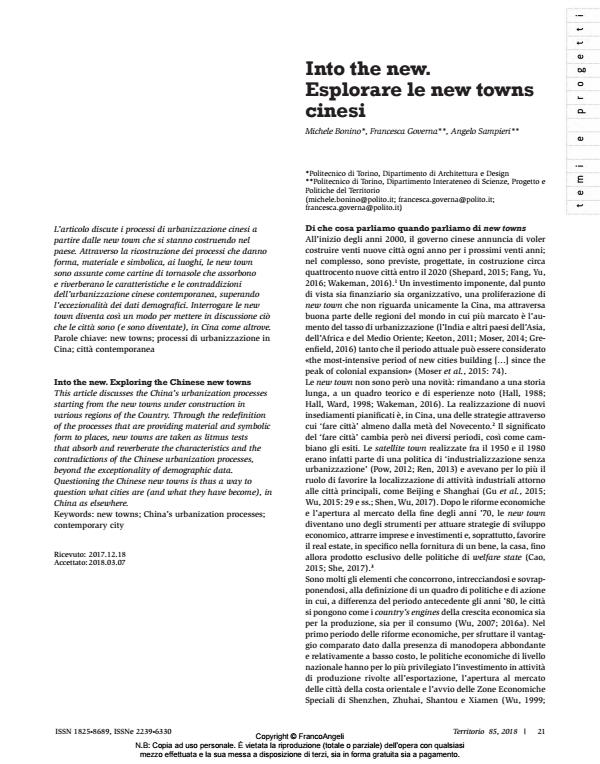Into the new. Esplorare le new towns cinesi
Titolo Rivista TERRITORIO
Autori/Curatori Michele Bonino, Francesca Governa, Angelo Sampieri
Anno di pubblicazione 2018 Fascicolo 2018/85
Lingua Italiano Numero pagine 19 P. 21-39 Dimensione file 9090 KB
DOI 10.3280/TR2018-085003
Il DOI è il codice a barre della proprietà intellettuale: per saperne di più
clicca qui
Qui sotto puoi vedere in anteprima la prima pagina di questo articolo.
Se questo articolo ti interessa, lo puoi acquistare (e scaricare in formato pdf) seguendo le facili indicazioni per acquistare il download credit. Acquista Download Credits per scaricare questo Articolo in formato PDF

FrancoAngeli è membro della Publishers International Linking Association, Inc (PILA)associazione indipendente e non profit per facilitare (attraverso i servizi tecnologici implementati da CrossRef.org) l’accesso degli studiosi ai contenuti digitali nelle pubblicazioni professionali e scientifiche
L’articolo discute i processi di urbanizzazione cinesi a partire dalle new town che si stanno costruendo nel paese. Attraverso la ricostruzione dei processi che danno forma, materiale e simbolica, ai luoghi, le new town sono assunte come cartine di tornasole che assorbono e riverberano le caratteristiche e le contraddizioni dell’urbanizzazione cinese contemporanea, superando l’eccezionalità dei dati demografici. Interrogare le new town diventa così un modo per mettere in discussione ciò che le città sono (e sono diventate), in Cina come altrove.
Parole chiave:New towns; processi di urbanizzazione in Cina; città contemporanea
Michele Bonino, Francesca Governa, Angelo Sampieri, Into the new. Esplorare le new towns cinesi in "TERRITORIO" 85/2018, pp 21-39, DOI: 10.3280/TR2018-085003